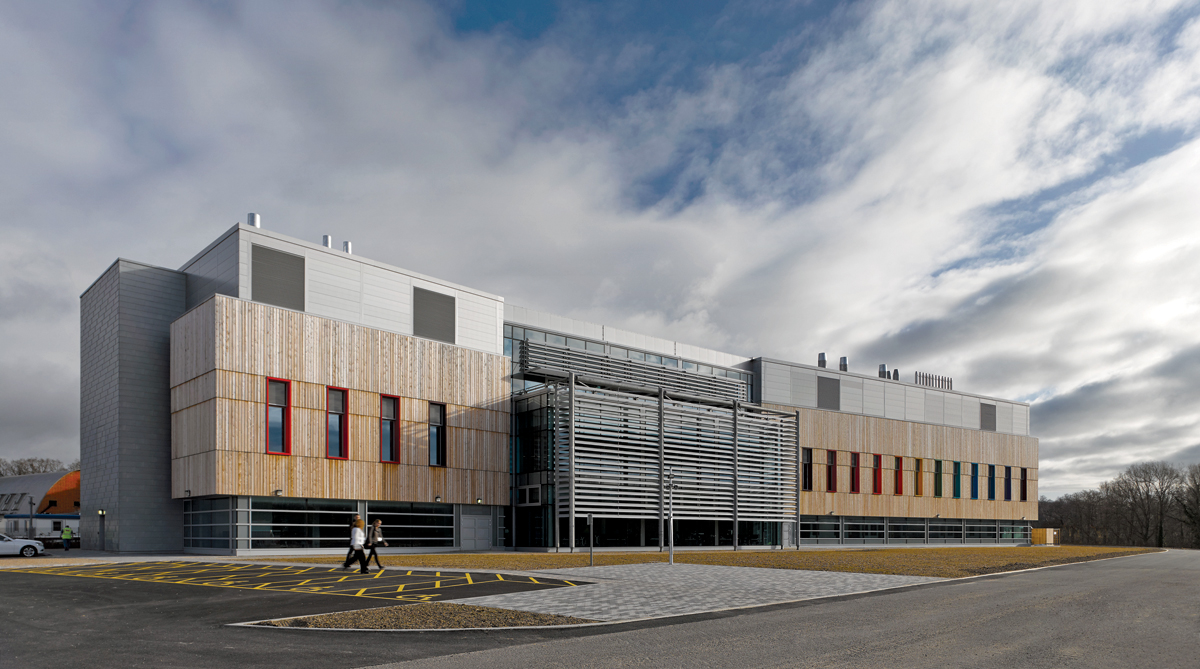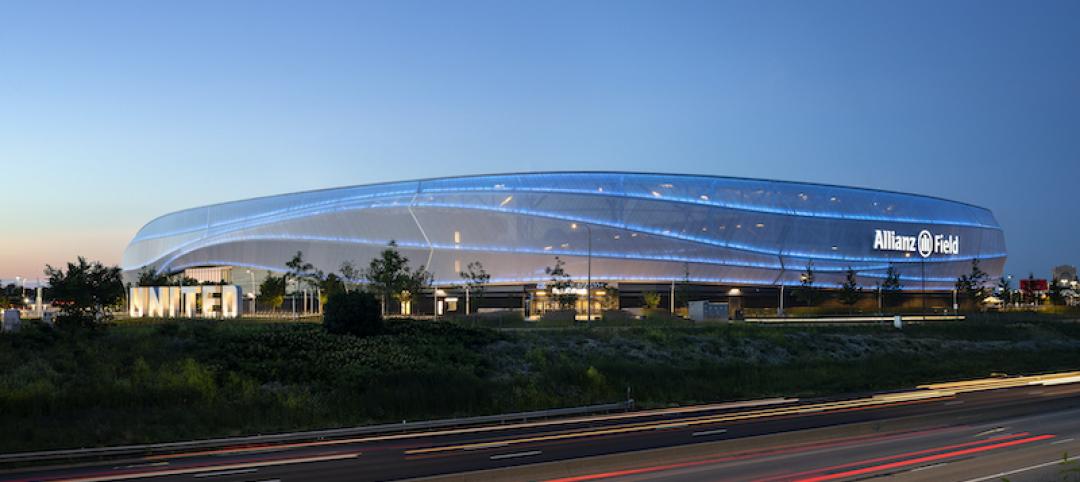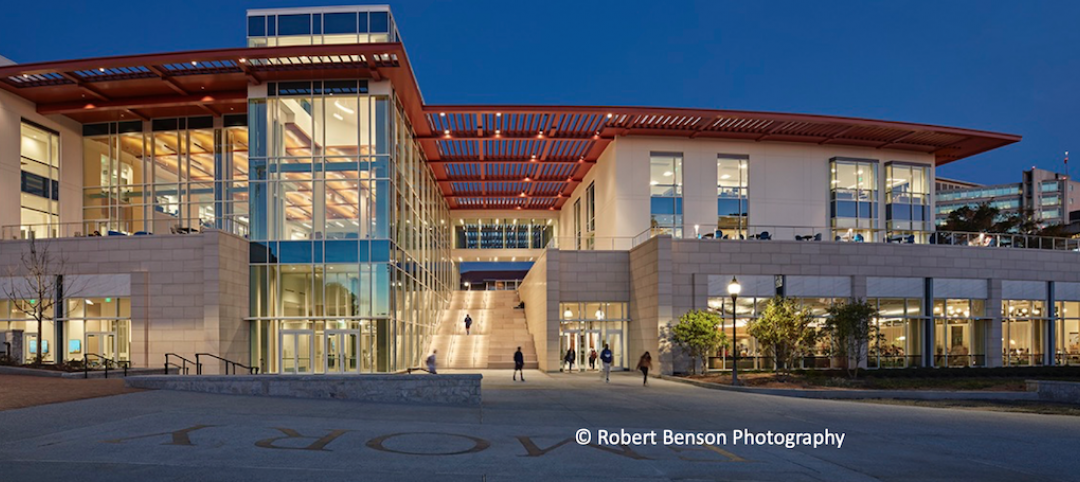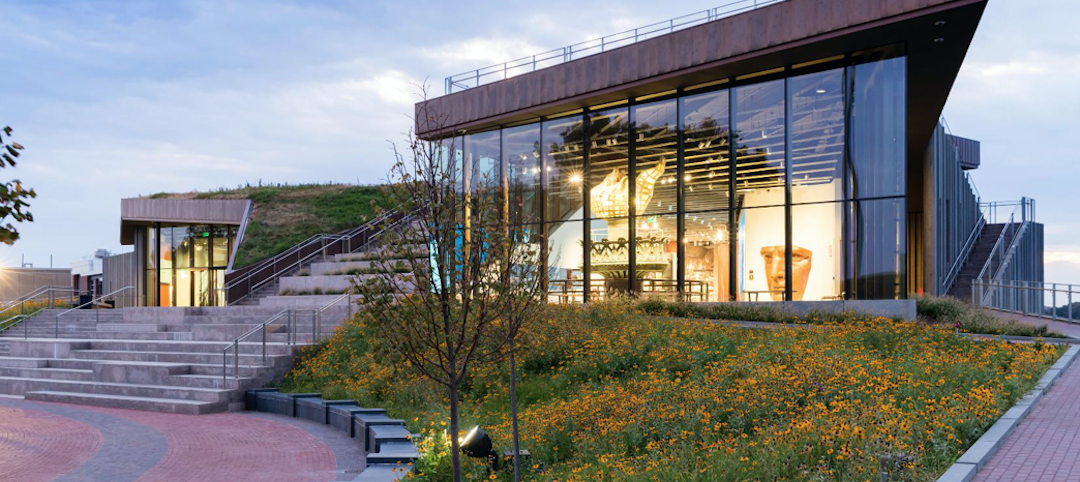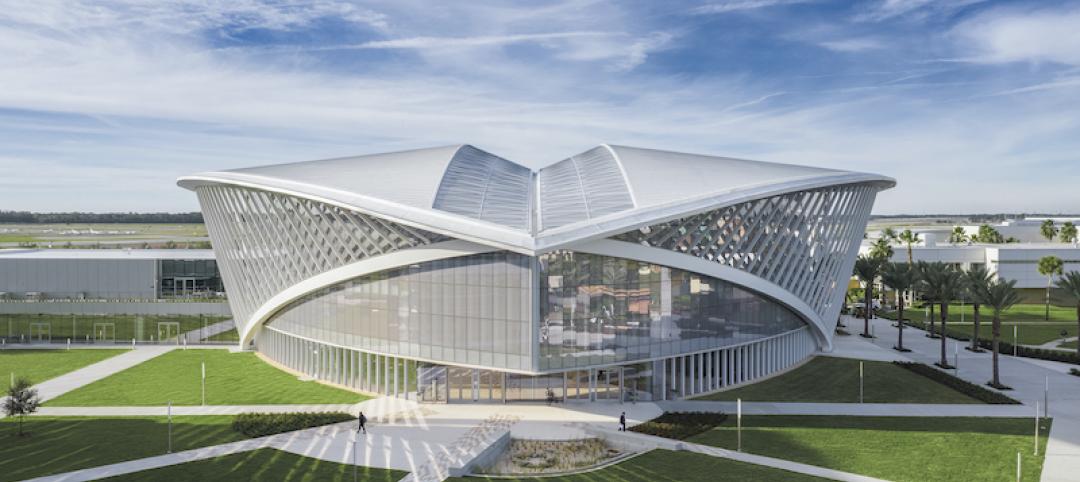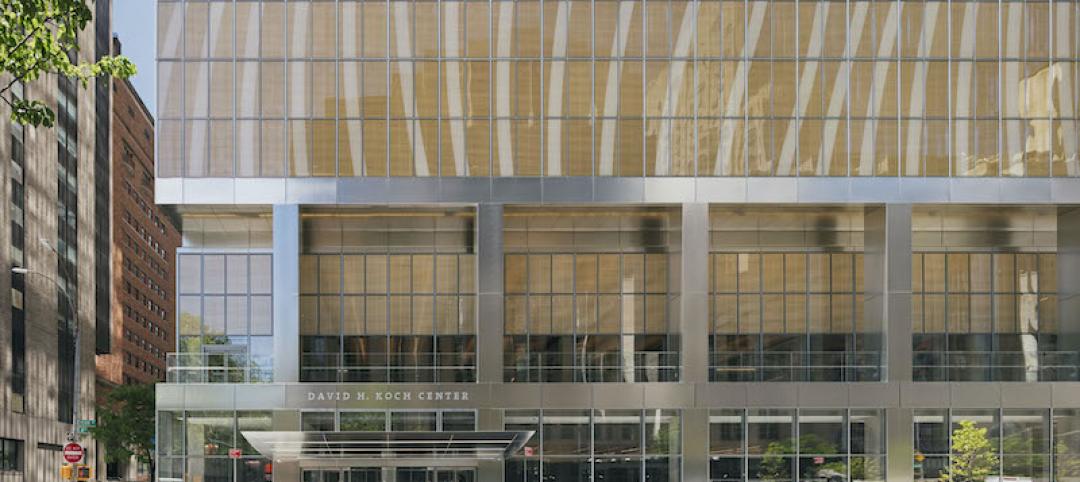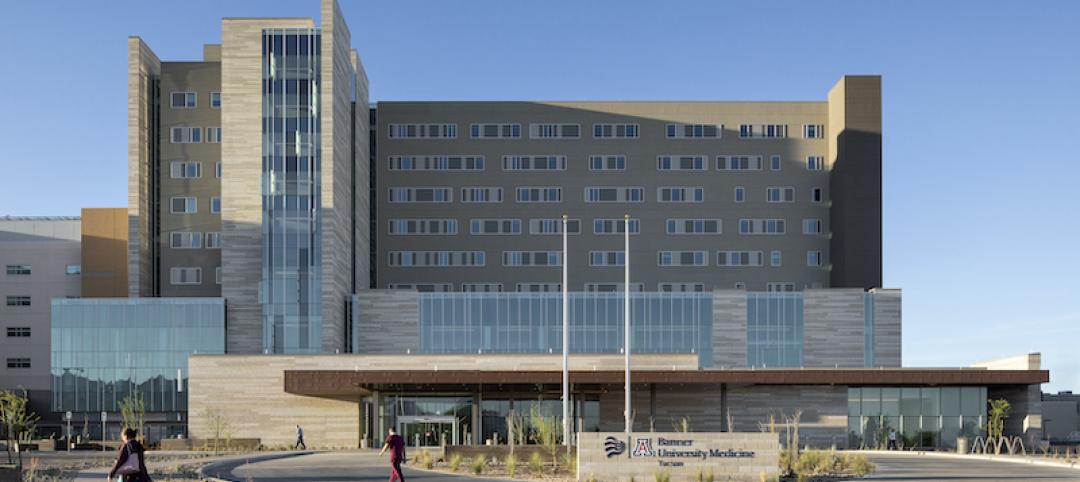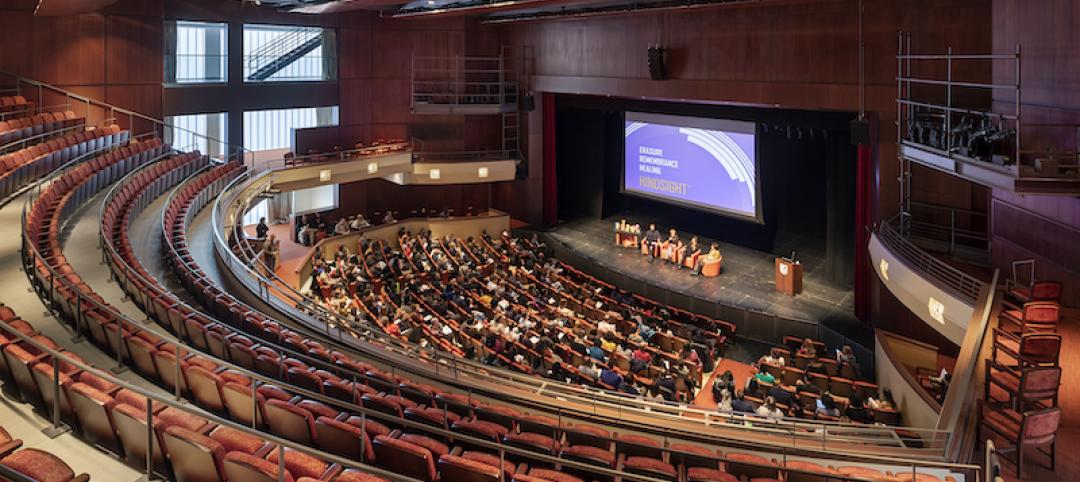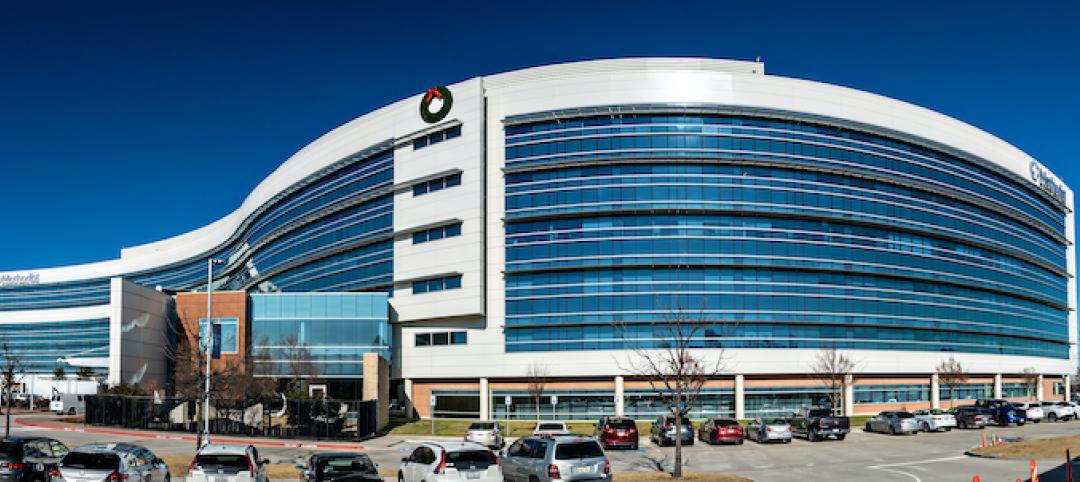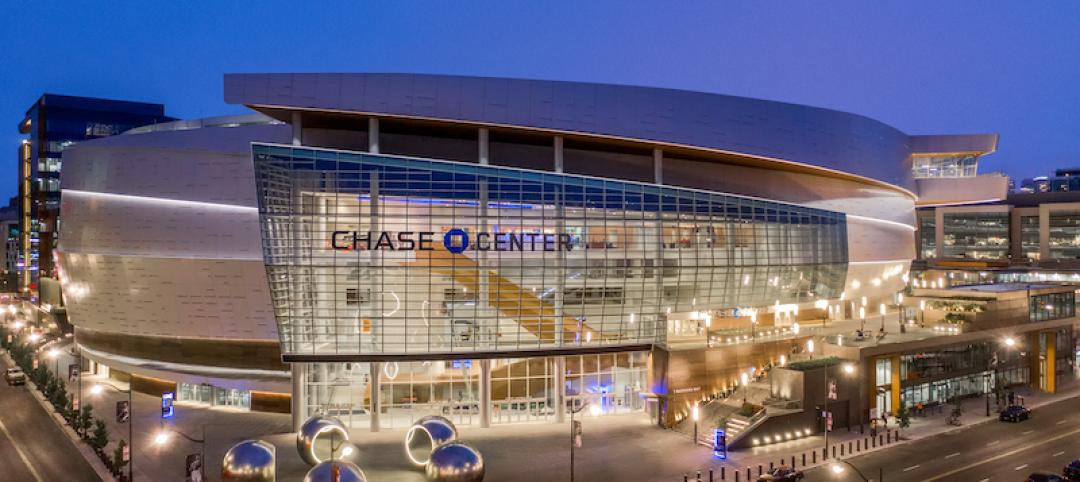Daily life as a researcher in the typical high-containment lab facility goes something like this: Arrive early in the morning at a nondescript building. Pass through security. Complete extensive containment procedures—shower-in, change clothes, etc. Finally, enter a dreary, largely windowless inner sanctum for eight to 10 hours of intense lab work. Any break from research activity—to grab lunch, attend a meeting, work on the computer—requires a trip out of containment, along with exit and re-entry procedures. On a busy day, researchers could repeat this cycle half a dozen times.
The Building Team for the Pirbright Institute’s new Category 4 biocontainment facility (roughly equivalent to BSL-3 Enhanced in the U.S.) thought there had to be a better way. With the goal of attracting and retaining the world’s top viral disease scientists to Pirbright’s campus in Surrey, England, the team, led by design architect and lab planner HDR, project/program manager AECOM, and design-builder Shepherd Group, set out to rewrite the rules of containment lab design. What the group ultimately delivered is unlike anything seen in an infectious diseases laboratory environment.
The 151,000-sf Plowright Building breaks free from the traditional box-inside-a-box containment lab approach by literally turning the building inside out. The lab spaces that normally would be located within the inner sanctum are located at the perimeter of the structure, where floor-to-ceiling windows flood the research spaces with natural light. At the center of the building are work and collaboration zones—offices, conference rooms, and a cafeteria—situated around a dramatic cylindrical, three-story, skylit glass atrium.
PROJECT SUMMARY
PLATINUM AWARDBBSRC National Virology Centre – The Plowright Building
The Pirbright Institute
Surrey, EnglandBUILDING TEAM
Submitting firm: HDR (architect, lab planner)
Owner: Pirbright Institute, Biotechnology and Biological Sciences Research Council
Project/program manager: AECOM
Structural, MEP engineer: AECOM Engineering
Cost consultant: Turner and Townsend
Commissioning consultant: Merrick & Co.
Design-builder: Shepherd GroupGENERAL INFORMATION
Size: 151,000 sf
Construction cost: $175 million U.S.
Construction time: July 2011 to October 2014
Delivery method: Design-build lump-sum price
To minimize the number of times researchers must transfer in and out of containment during a typical workday, the team located most of the building’s work and meeting spaces within the containment zones, including a portion of the main cafeteria. There, a 15-foot-high glass wall separates the containment dining area from the general eating area—a design feature that, for the first time, allows Pirbright to conduct all-staff meetings and symposiums without researchers having to leave containment.
To pull off this audacious scheme, the team worked hand in hand with the client to develop creative solutions to countless formidable problems. They include:
• Maintaining an airtight seal at the perimeter. Solution: a custom concrete containment barrier, meticulously sanded and coated with a seven-layer custom-designed containment system. Steel frames for the building’s 2,182 through-wall penetrations (windows, doors, services, etc.) were cast into the concrete walls to accept gaskets that are vital to maintaining an airtight seal at each penetration point.
• Applying a layered approach to containment that mirrors risk level. Solution: A negative air-pressure cascade moves from the lowest containment zones (RS0) to the most stringent zones (RS4) with once-through air that is exhausted through a HEPA air-filtration system in a penthouse floor above the labs. Sample and waste flow is one-directional. Samples come in at one end of a lab wing and waste goes out—through autoclaves—at the opposite end.
The close-knit Building Team implemented numerous teaming and quality best practices—including factory acceptance testing, mockup testing, team scoring, 360-degree feedback, and clean builder procedures—to ensure the project went off without a hitch. The results are proof of the team’s success. The building opened last October, a week earlier than scheduled and under budget. More to the point, the facility is meeting Pirbright’s stated goal of attracting top talent. Since opening, the institute has more than doubled its research staff, to 350.
“This project showcases a truly innovative design approach to a containment facility,” said Building Team Awards judge Nathaniel Snydacker, PE, LEED AP, Vice President with Environmental Systems Design. “The collaboration between design team, owner, and construction team was readily apparent in the unique vision for this facility, allowing color and sunlight into what would typically be a cavern.”
For more about the Plowright Building: www.BDCnetwork.com/Pirbright.
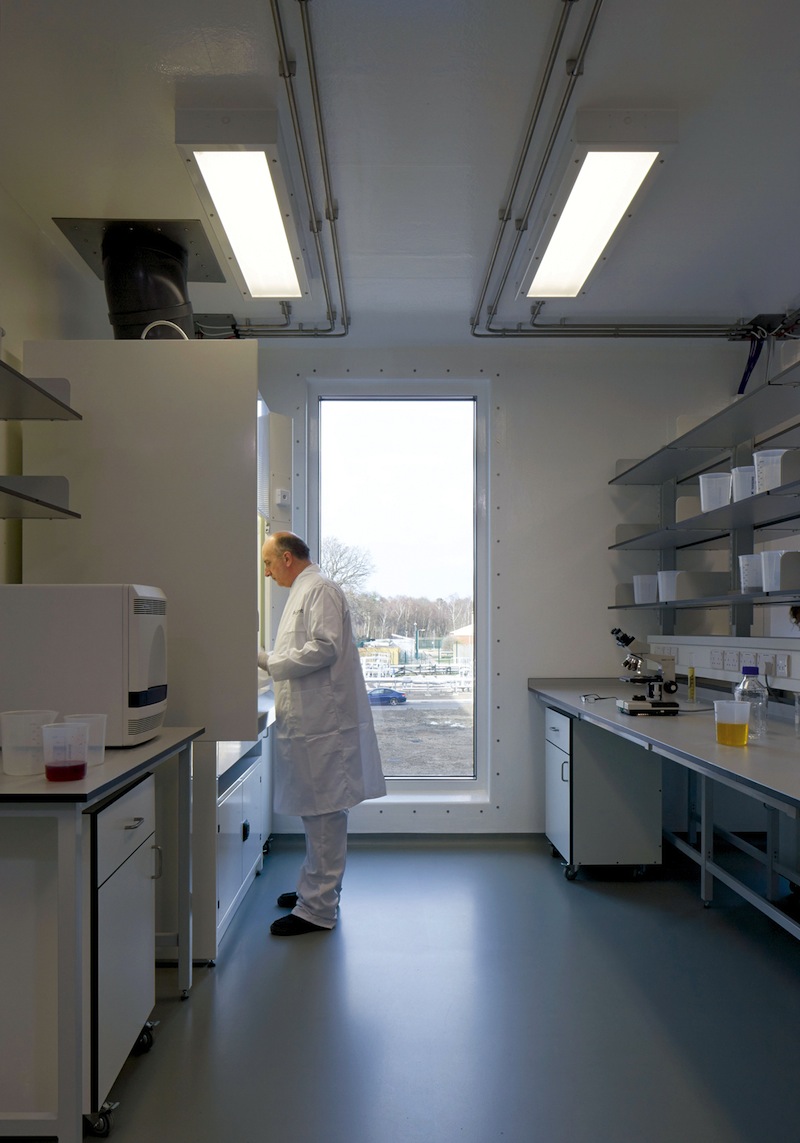 Floor-to-ceiling windows flood the labs with natural light and offer scenic views of the Pirbright Institute campus. To maintain an airtight seal at the through-wall penetrations (windows, doors, service ducts, etc.), the team developed a custom gasket system that can be easily serviced for the life of the building. Photo: © James Brittain
Floor-to-ceiling windows flood the labs with natural light and offer scenic views of the Pirbright Institute campus. To maintain an airtight seal at the through-wall penetrations (windows, doors, service ducts, etc.), the team developed a custom gasket system that can be easily serviced for the life of the building. Photo: © James Brittain
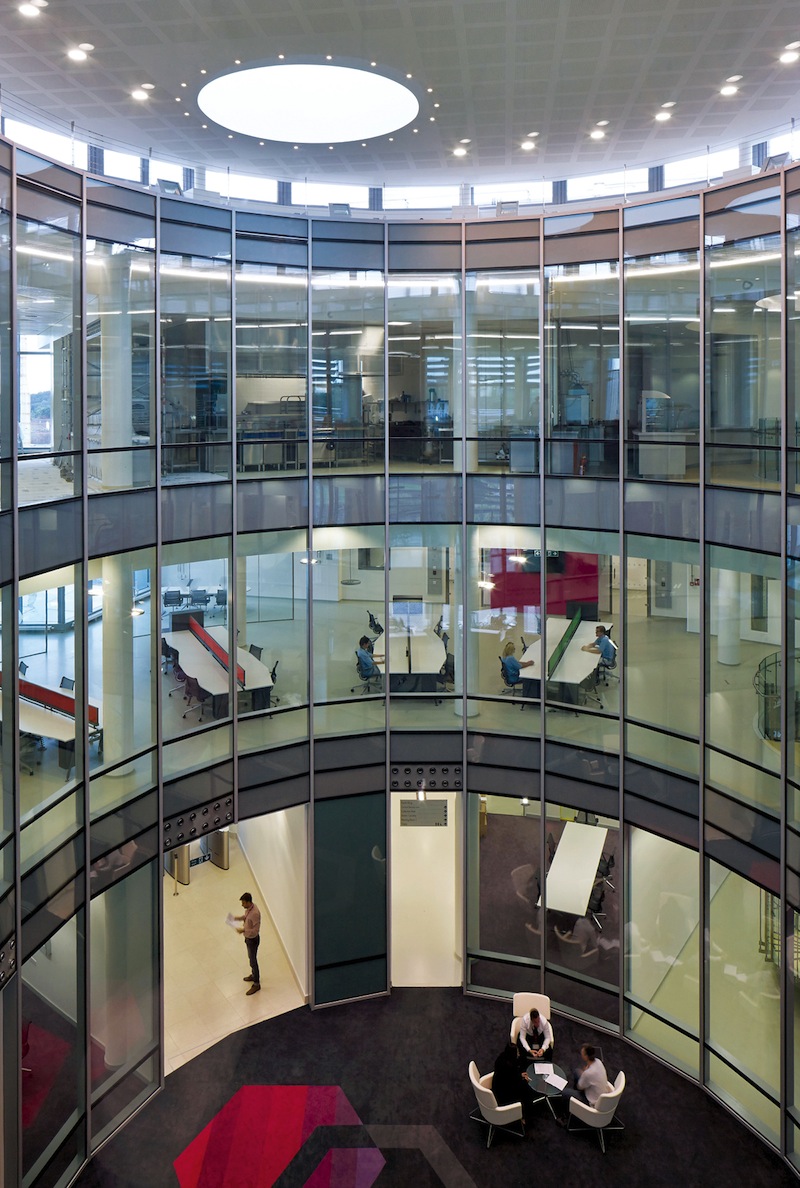 The main collaboration spaces at Plowright—meeting rooms, workstations, and cafeteria—overlook a dramatic, three-story, glass-enfolded atrium at the heart of the facility. The building’s transparent curtain wall, skylit atrium, and abundant interior glass flood the indoor spaces with natural light and provide visual connectivity to the work being conducted inside the building. Photo: © James Brittain
The main collaboration spaces at Plowright—meeting rooms, workstations, and cafeteria—overlook a dramatic, three-story, glass-enfolded atrium at the heart of the facility. The building’s transparent curtain wall, skylit atrium, and abundant interior glass flood the indoor spaces with natural light and provide visual connectivity to the work being conducted inside the building. Photo: © James Brittain
Related Stories
Building Team Awards | Nov 2, 2020
Fans come first at Allianz Field
The new home of the Minnesota United soccer club wins a Silver Award in BD+C’s 2020 Building Team Awards.
Building Team Awards | Oct 24, 2020
Emory University Student Center wins the top award in 2020 Building Team Awards
Emory University Student Center wins the top award in 2020 Building Team Awards
Building Team Awards | Oct 22, 2020
Look up to the skies
The Mori Hosseini Student Union at Embry-Riddle Aeronautical University takes home a Silver Award in the 2020 Building Team Awards.
Building Team Awards | Oct 22, 2020
Judging a book by its cover
The New York Presbyterian David H. Koch Center wins a Silver Award in BD+C’s 2020 Building Team Awards.
Building Team Awards | Oct 21, 2020
Big Room equals big results
Tucson’s Banner University Medical Center is honored with a Gold Award in the 2020 Building Team Awards.
Building Team Awards | Oct 21, 2020
New York’s STEM epicenter and career gateway
The CUNY New York City College of Technology Academic Building wins a Gold Award in BD+C’s 2020 Building Team Awards.
Building Team Awards | Oct 20, 2020
Seamless speed to market drives Texas hospital’s growth
Learn why the Methodist Richardson Medical Center Vertical Expansion, in Richardson, Texas, was honored with a Gold Award in the 2020 Building Team Awards.
Building Team Awards | Oct 20, 2020
Winning with teamwork
The new home of the NBA’s Golden State Warriors, Chase Center, is honored with a Gold Award in the 2020 Building Team Awards.
Coronavirus | Oct 8, 2020
The Weekly show: Statue of Liberty Museum, emotional learning in K-12, LA's climate change vulnerability
The October 8 episode of BD+C's "The Weekly" is available for viewing on demand.


